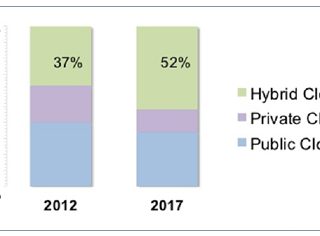
As anyone who does business with smaller enterprises knows, most have begun to use some sort of cloud service. One survey conducted last summer for EMC shows 62% using cloud — up from 28% a year earlier.
Note that most of these companies are using public cloud services, and plenty of that use is what’s called ‘shadow IT’ — which is to say, end-users are doing unauthorized end runs around their IT departments to access these public cloud services for the sake of convenience and ease of use.
The solution to the shadow problem is to deploy a hybrid cloud that combines the best of public and private clouds. When it comes to smaller businesses, this typically means committing to a private cloud infrastructure (often hosted at a cloud datacenter) that uses standardized technologies to enable data and application portability to and from public clouds (e.g., cloud bursting for load balancing between clouds).
Thus, an enterprise can use public cloud services where security and reliability are of minor concern, but keep sensitive data and apps on a highly secured private hosted network.
As the chart below attests, the move to hybrid clouds is underway — and gaining momentum fast. If your customers haven’t already begun to use public clouds and express concern about shadow IT, they will soon.
Source: Future of Cloud Computing 2012 , North Bridge Venture Partners
The good news is that with the right cloud services provider as your partner , you can respond to your customers’ cloud concerns with practical, affordable, easy-to-deploy solutions that address their current needs and set up a path to a high-growth cloud-enabled future — for you as well as for your customers.
